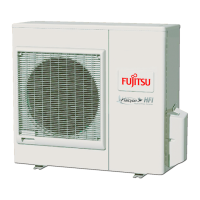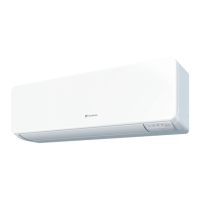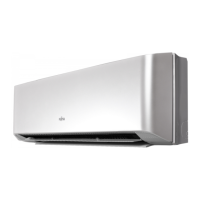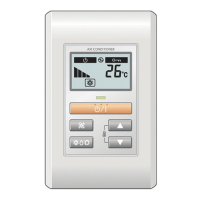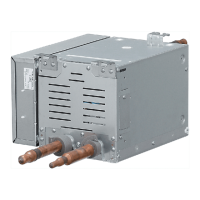Do you have a question about the Fujitsu R407C and is the answer not in the manual?
| Brand | Fujitsu |
|---|---|
| Model | R407C |
| Category | Air Conditioner |
| Language | English |
Pre-operation checks for correct setup and safety measures.
Procedures for verifying system operation and detecting issues during the test run.
Methods to perform test runs using outdoor PC board or remote controllers.
Parameters and conditions for controlling the test run operation.
Diagrams and switch/connector details for various circuit boards like indoor, outdoor, and controllers.
Detailed mapping of functions to pins and switches for indoor and outdoor units.
Explains DIP switch and rotary switch functions for setting unit operation and addresses.
Details on controlling units via external signals and monitoring output statuses.
Explains compressor operating conditions, output patterns, restart prevention, and recovery operations.
Details on controlling heat exchanger capacity using valves and expansion valves.
Information on outdoor fan ON/OFF control and fan speed settings.
Control logic and operation flow for expansion valves in heat exchangers.
Control mechanism for bypassing capacity difference as a circulating save amount.
Control logic for solenoid valve 2 based on operating capacity and required capacity.
Conditions and procedures for starting, ending, and performing defrosting operations.
Details on individual and central oil return control methods using solenoid valves.
Explanation of oil recovery operation, its timing, and behavior of components.
Describes various protection functions like temperature, pressure, and overload protection.
Setup and operation of OFF, ON, and WEEKLY timers for scheduling unit operation.
FAN control modes including AUTO, LOW, MED, HIGH, DRY, and HEAT operations.
Explains operating modes (Cool, Fan, Heat, Dry, Stop) and component control within each mode.
Instructions for adjusting vertical and horizontal air direction and swing operations.
How to activate and use the energy saving mode for temperature adjustment.
Procedure for enabling and disabling the anti-freeze function.
Control process for electronic expansion valves to adjust refrigerant charge.
Behavior of the unit upon restarting after a power interruption.
Operation cycle of the drain pump and conditions for its activation.
Diagnosing normal and abnormal operation displays for indoor units using LED indicators.
Diagnosing normal and abnormal operation displays for outdoor units using LED indicators.
Troubleshooting remote controllers (wired, simple, central) and interpreting error codes.
Error codes displayed on the network convertor and their meanings.
Detailed guide to troubleshooting errors based on error codes for various components.
Troubleshooting common operational issues that do not trigger error codes.
Identifies normal operations that might be mistaken for faults.
Calculation method for additional refrigerant charge based on pipe length and diameter.
Procedures for setting refrigerant circuit, indoor unit, and remote controller addresses.
Steps for starting, stopping, and performing the pump down operation for refrigerant recovery.
List of tools and equipment required for installation and servicing.
Guidelines for pipe preparation, flare connection, brazing, and tightness testing.
Precautions for handling refrigerant leaks, replacing parts, and general servicing.
Information on R407C refrigerant characteristics, handling, and comparison with R22.
Schematic diagram illustrating the refrigerant circuit connections for the system.
Resistance values for thermistors and pressure sensor characteristics.
Detailed wiring diagrams for various indoor unit types and the outdoor unit.
Diagrams showing the physical layout of components within the outdoor unit and its control box.
Explanation of the model designation codes for outdoor and indoor units.
